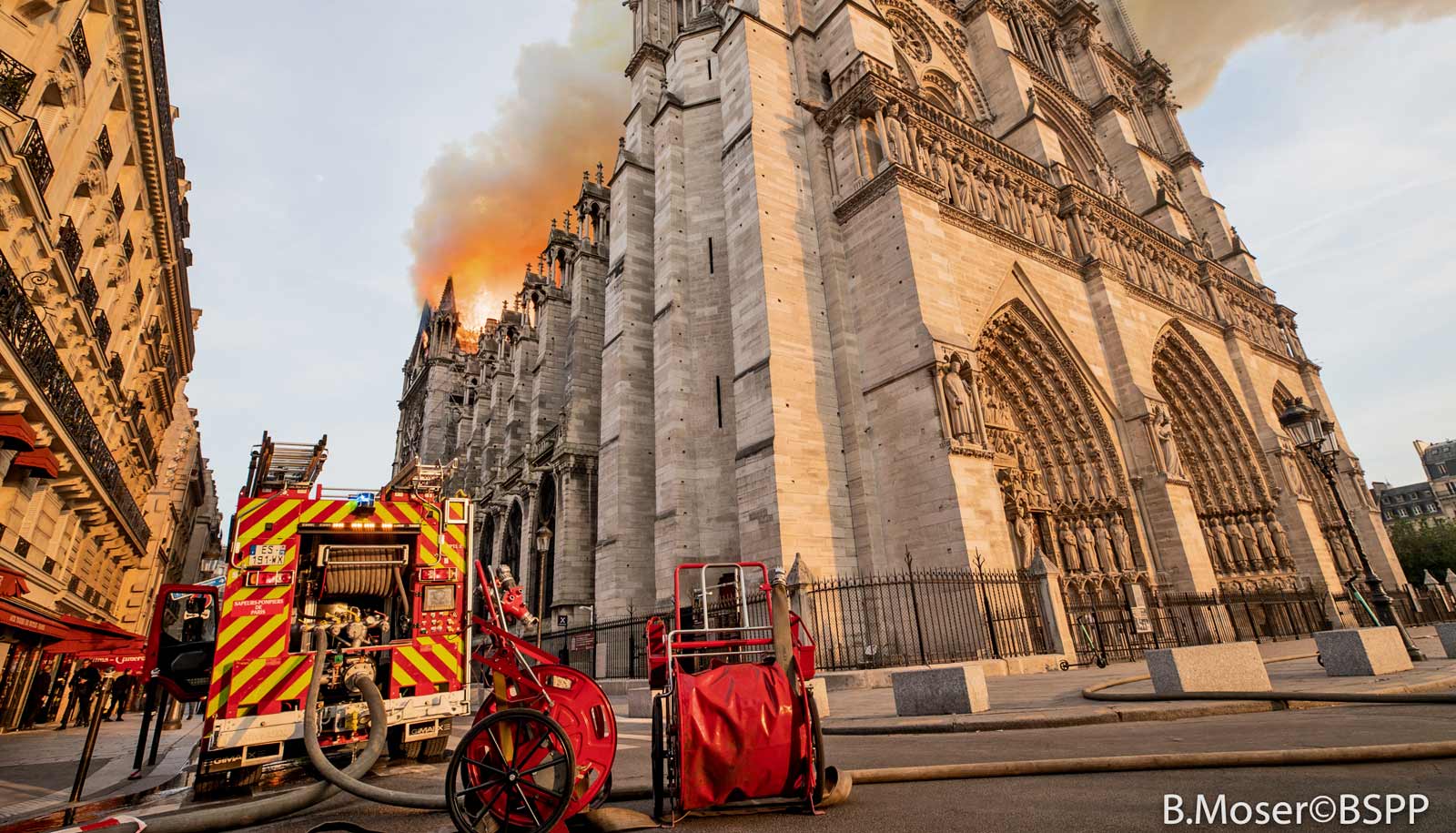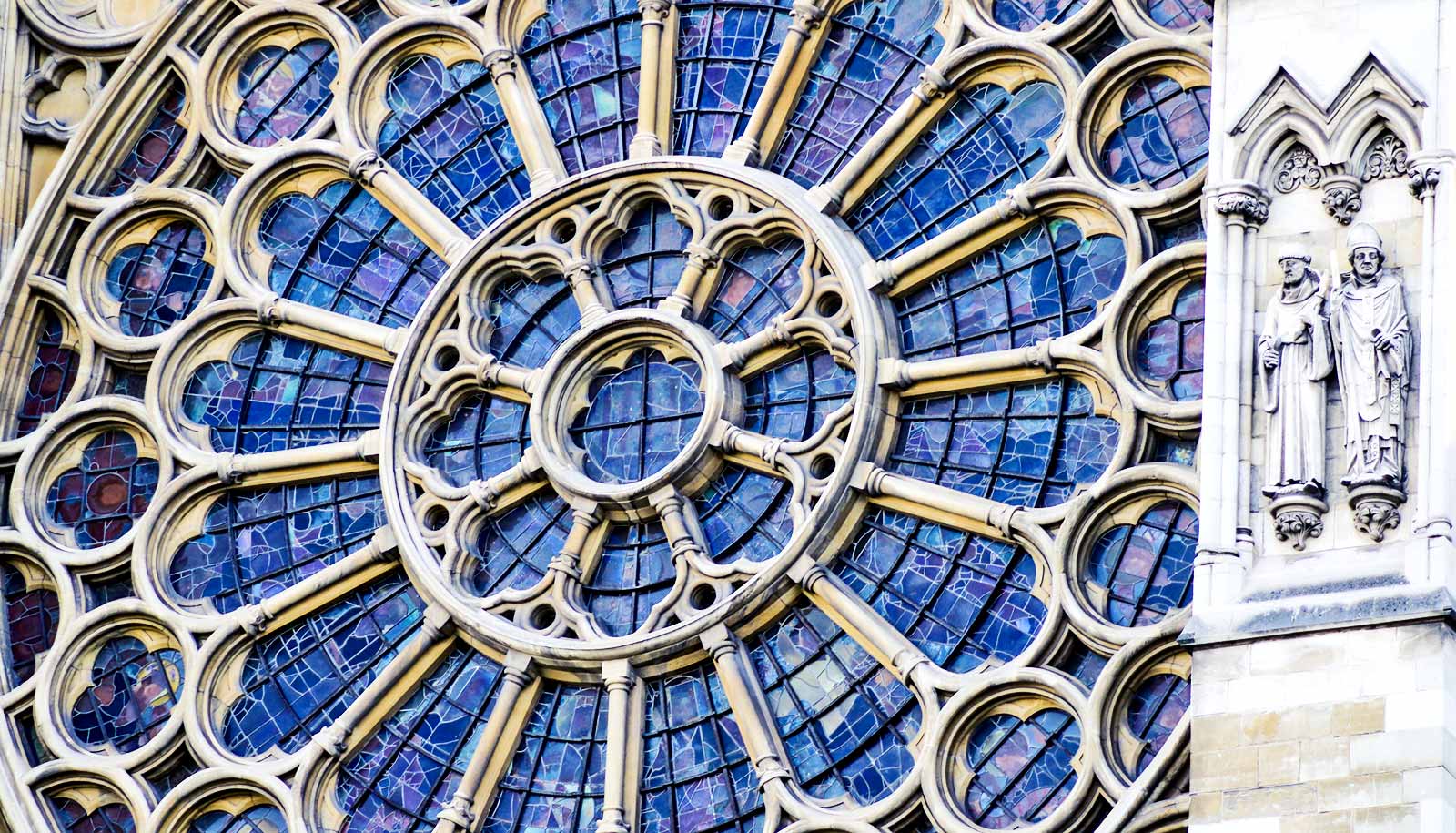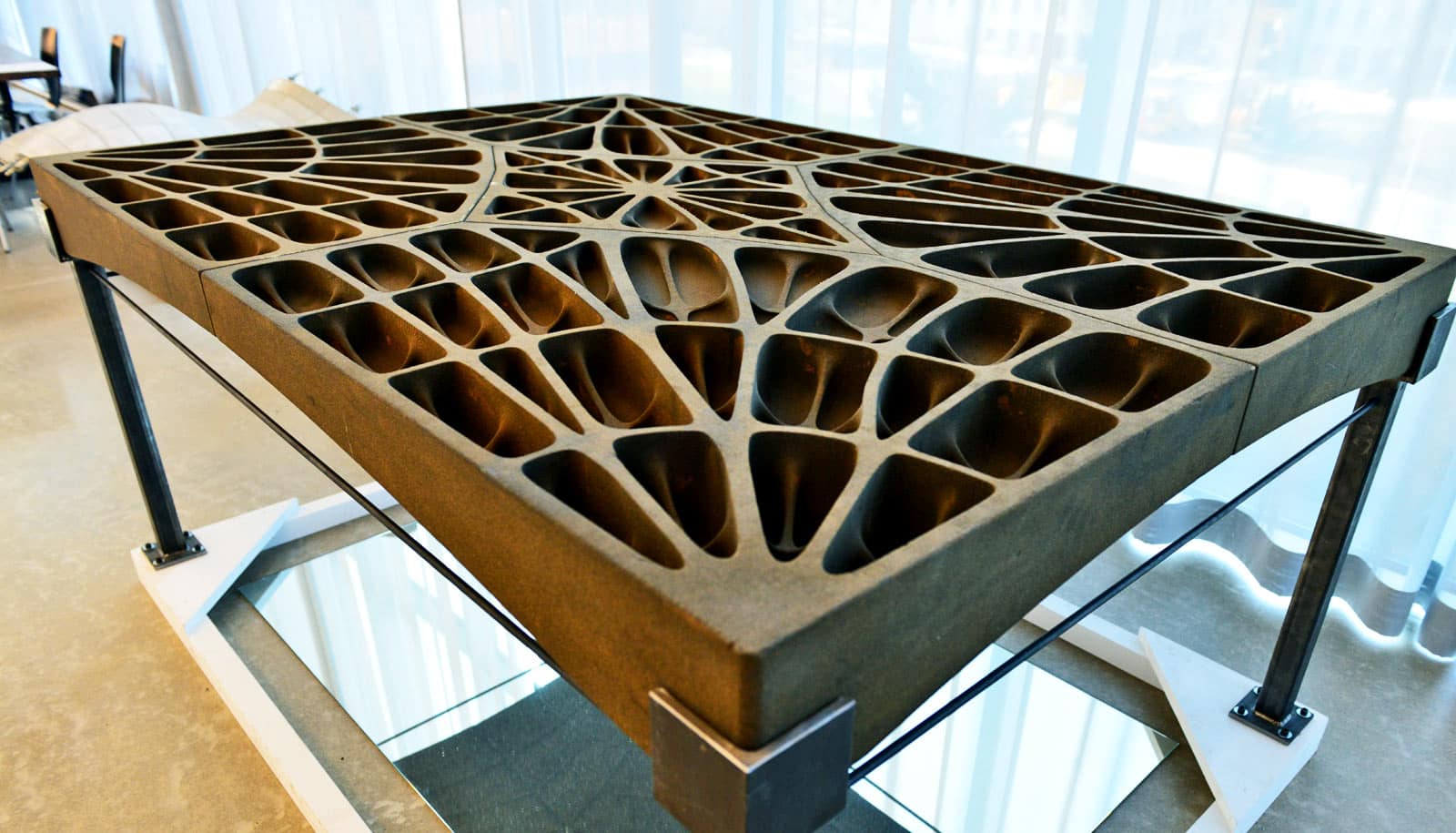A horrific fire claimed most of the roof and iconic spire at the Cathedral of Notre Dame in Paris on April 15, a destructive event that caused potentially even more harm to the 12th century building’s historic and religious artifacts and treasures.
Charles McClendon, a professor of the history of art at Brandeis University, studies art and architecture in western Europe with a particular emphasis on ancient and medieval times.
Here, with the world vowing to rebuild the cathedral, McClendon discusses the Notre Dame’s past and future.
What was your reaction to seeing the Notre Dame cathedral in Paris covered in smoke and flames?
I was shocked and speechless by what was happening. It was so dramatic to see those images, which were truly breathtaking.
As soon as I heard about the extensive restoration and could see the scaffolding—near where the spire was—I knew what had happened. What was burning was the forest or the “foret,” which are hundreds if not thousands of massive beams and timbers dating back to the 12th century.
Notre Dame in Paris is noted for having almost all of its original carpentry. However, that made the church a tinderbox.
Fires have claimed entire cathedrals in the past. Does that mean there’s a way forward for Notre Dame?
Oh yes, but only if the vaulting or stone masonry of the ceiling is relatively intact. If the vaults are in decent shape, then with time and expertise things can be repaired.
The cathedral in Reims near the heart of France’s Champagne region was bombarded in World War I, caught fire, and had massive destruction in its vaults that was repaired. Indeed, Reims had a “forest” of its own as well that burned up during the bombardments but has since been replaced and reconstructed with metal. It was repaired quite beautifully.
In addition to the vaults, the fire at Notre Dame had extreme heat which can cause masonry to crack and the lead in the stained glass windows to melt. There is additional cause for concern with some of the other relics and artifacts, but restoration going forward will depend on the stability of the framework.
How are restoration and renovation conducted and viewed in the realm of gothic and medieval architecture? Will there forever be an asterisk on Notre Dame in Paris?
It depends on how the renovation is done. Modern restoration techniques are usually very careful and very subtle. It also depends on the philosophy you employ.
Some restoration tries to be subtle but make it clear, specifically up close to the damage, what is new and what is original so future generations can come back and know what was repaired. From far away, though, the restoration won’t seem as dramatic.
To be honest, though, Notre Dame has suffered extensive damage over the years. It was the focus of attacks during the French Revolution. Victor Hugo helped immortalize the cathedral with The Hunchback of Notre Dame (originally titled Notre-Dame of Paris) published in 1831, but in his writing he makes clear what dismal shape the building is in—the roof had been neglected, it leaked, and the whole building itself was grimy.
In response to Hugo, the cathedral underwent a major renovation in the 19th century, which led to the creation of the spire which just fell in this fire. Indeed, even recently there were complaints about the roof leaking and the masonry and sculptures falling apart. This was the cause for the renovations, which ironically and sadly just claimed part of the building.
Obviously this building was under renovation when it caught fire, but in general, are we taking these works of art for granted?
We should not neglect these buildings.
When we notice things like a leaky roof, loose masonry, and sculpture falling apart we have to intervene. But, we have to be very careful. This kind of tragedy can happen easily.
Also, modern air pollution is the enemy of these buildings. Carbon monoxide literally dissolves marble and limestone, so the facades are not simply dirty. It is literally eating away at the building. So we have to maintain them, but be careful. The area covered by restoration scaffolding at Notre Dame is where the fire started.
What’s the cultural significance that is most often overlooked about Notre Dame in Paris?
It’s the first of the gigantic cathedrals—it starts the age of gigantism because it was the first cathedral to break the 100-feet mark in height. Each city wanted its cathedral to be higher than the others, like trying to build skyscrapers higher and higher.
But it’s not just a church, or Paris, or France. It’s the most famous gothic church. Religious or not, it has been the subject of contemplation for centuries.
Notre Dame was created at the time of the birth and expansion of the first international university. The University of Paris is an outgrowth of the cathedral school and it became a center for all of Europe around 1200. Some of the best minds taught there—yes, in service to the church—but also to start the first curriculum of the liberal arts.
Paris was seen as a new Athens and Notre Dame was a manifestation of this. The cathedral is amazing, both in ambition and in size.
Source: Brandeis University


